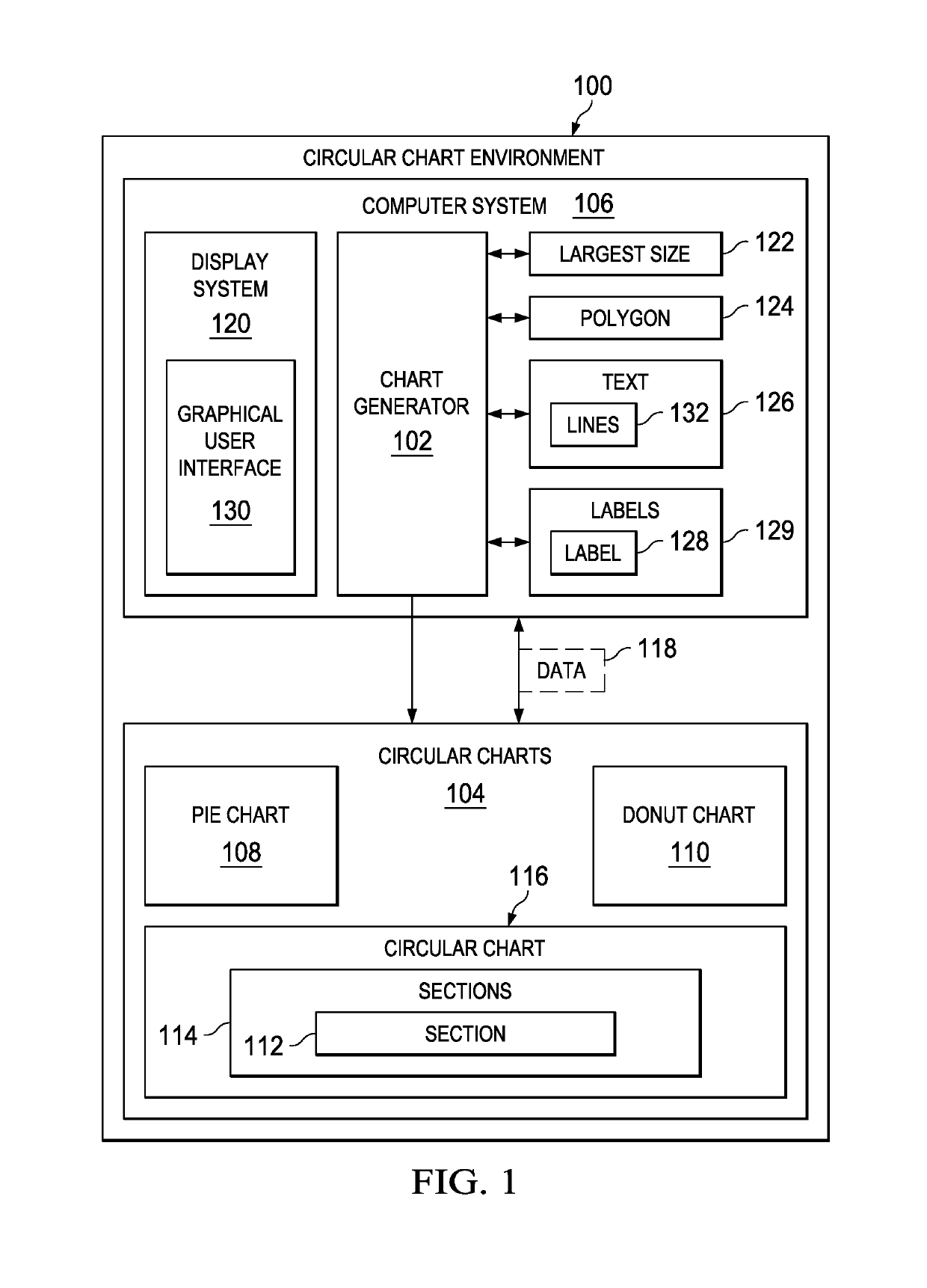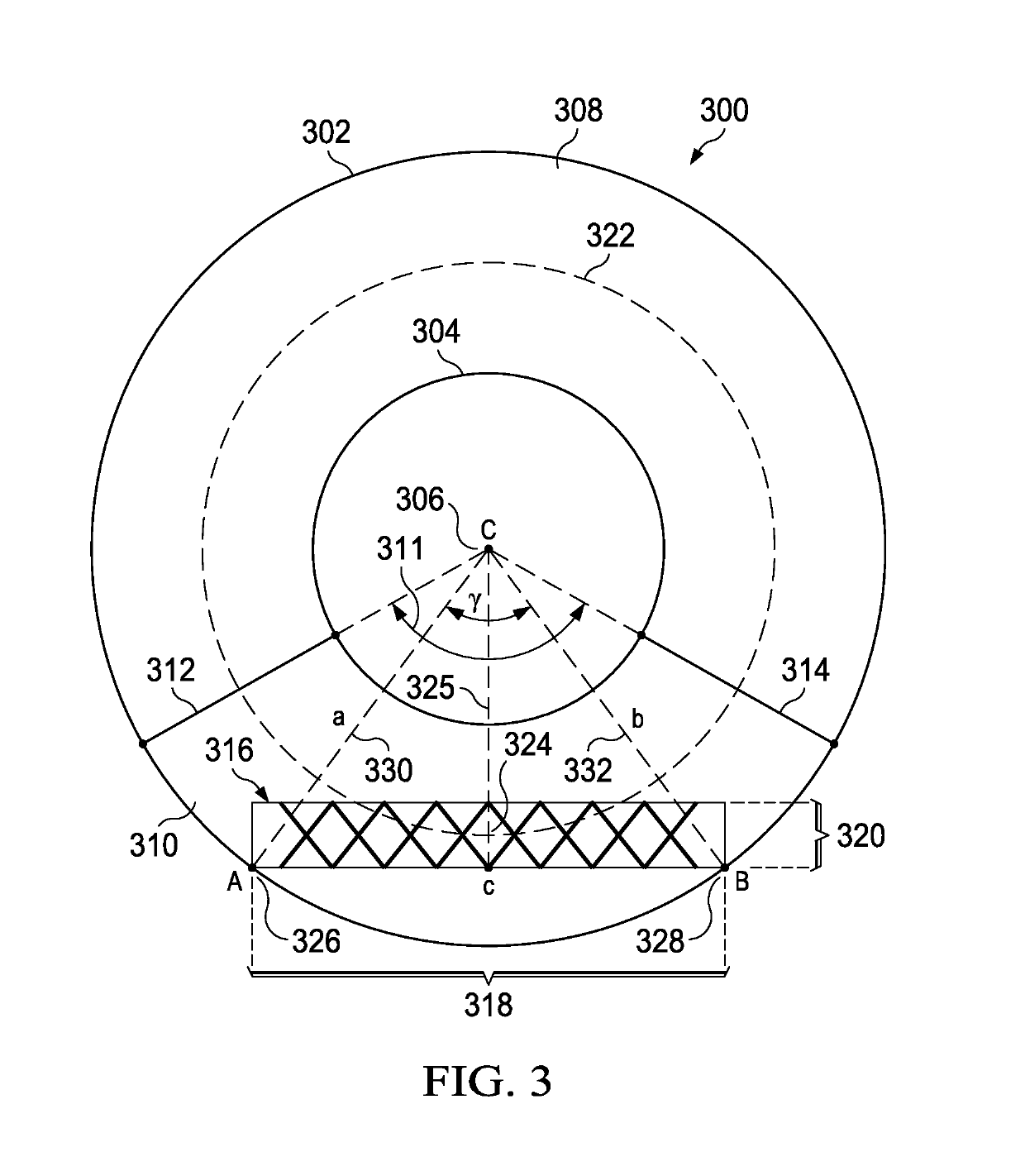Chart labeling system
a labeling system and chart technology, applied in the field of data processing systems, can solve the problems of confusing the graphically conveying of the difficulty of placing the text in the labels into the different sections, and the confusion of graphically conveying the data represented in the different sections of the circular char
- Summary
- Abstract
- Description
- Claims
- Application Information
AI Technical Summary
Benefits of technology
Problems solved by technology
Method used
Image
Examples
Embodiment Construction
[0030]The illustrative embodiments recognize and take into account one or more different considerations. For example, the illustrative embodiments recognize and take into account that currently used techniques for generating labels with text in charts may not be as clear as possible to convey information to a person viewing the chart. The illustrative embodiments recognize and take into account that current techniques for displaying text in circular charts often have an undesirable trade-off between the aesthetics of the chart and conveying the information in a desired manner. For example, the illustrative embodiments recognize and take into account that the use of abbreviations, codes, or other shorthand techniques for labels in a circular chart does not convey information as quickly and clearly as desired. Further, labels placed on the outside of circular charts often do not have a desired level of aesthetics.
[0031]Thus, the illustrative embodiments provide a method and apparatus ...
PUM
 Login to View More
Login to View More Abstract
Description
Claims
Application Information
 Login to View More
Login to View More - R&D
- Intellectual Property
- Life Sciences
- Materials
- Tech Scout
- Unparalleled Data Quality
- Higher Quality Content
- 60% Fewer Hallucinations
Browse by: Latest US Patents, China's latest patents, Technical Efficacy Thesaurus, Application Domain, Technology Topic, Popular Technical Reports.
© 2025 PatSnap. All rights reserved.Legal|Privacy policy|Modern Slavery Act Transparency Statement|Sitemap|About US| Contact US: help@patsnap.com



